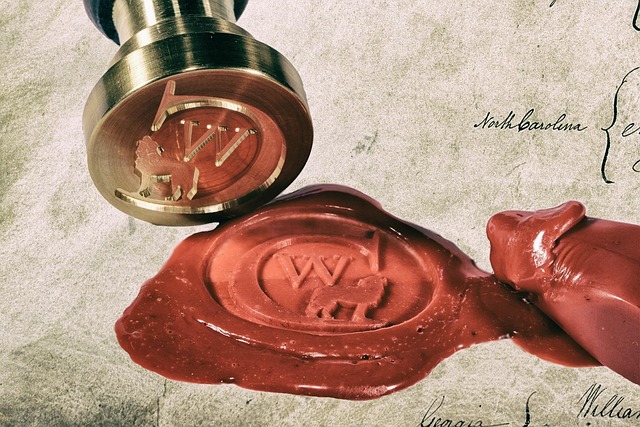In today's global culinary landscape, UK cookbook and culinary guide translations play a pivotal role in bridging cultural gaps and promoting international food appreciation. Professional translation services ensure these guides remain true to their British roots while making them accessible worldwide. Skilled translators navigate culinary terminology, idioms, and regional variations to deliver accurate, culturally sensitive content. Quality Assurance processes and the use of advanced technologies like AI-driven MT and TBM systems further enhance translation accuracy and consistency. These services are crucial for publishers aiming to reach global audiences and foster a deeper understanding of diverse cuisines.
In the global culinary landscape, ensuring quality translations is paramount. UK cookbooks and culinary guides, rich in cultural nuances and precise instructions, demand meticulous handling during translation. This article delves into the critical aspects of achieving accuracy, clarity, and cultural sensitivity in culinary translations. From understanding unique challenges like preserving ingredient specificity to leveraging modern tools, we explore strategies for excellence in UK cookbook and guide translations, ensuring flavors and techniques remain authentic across languages.
- Understanding the Importance of Quality Culinary Translations
- The Unique Challenges of Translating Cookbooks
- Selecting the Right Translation Service for UK Food Literature
- Key Considerations for Accurate Flavor and Ingredient Translation
- Cultural Sensitivity in Culinary Guides: A Must-Have
- Techniques to Preserve Cooking Instructions Clarity
- Quality Assurance: How to Ensure Consistency Across Translations
- The Role of Native Speakers in Culinary Translation Excellence
- Modern Tools and Technologies for Enhanced Culinary Translation
- Case Studies: Successful UK Cookbook and Guide Translations
Understanding the Importance of Quality Culinary Translations

In today’s global culinary scene, where dishes traverse borders and flavors connect cultures, quality translations are paramount. Accurate UK cookbook and culinary guide translations ensure that the essence of a recipe or gastronomic experience isn’t lost in translation. They bridge the gap between language barriers, allowing food enthusiasts worldwide to explore and appreciate diverse cuisines authentically.
When it comes to UK cookbooks and culinary guides, precision is key. A professional translation service doesn’t just replace words; it captures the cultural nuances, ingredient substitutions, and cooking techniques inherent in each recipe. This attention to detail not only maintains the integrity of the original content but also enhances cross-cultural understanding and appreciation for culinary arts.
The Unique Challenges of Translating Cookbooks

Translating cookbooks presents a unique set of challenges that go beyond simple word-for-word substitutions. When it comes to UK cookbooks and culinary guides, precision is paramount. Ingredients, cooking techniques, and cultural nuances must be accurately conveyed to ensure the translated version retains its authenticity and appeal. A skilled translator needs to understand not just the language but also the culinary traditions and regional variations to capture the essence of each recipe.
One of the complex aspects is dealing with idiomatic expressions and metaphorical language often used in cooking, which don’t always have direct translations. For instance, describing a dish’s “richness” or “depth of flavor” requires careful consideration as these concepts may be expressed differently across languages. Moreover, visual descriptions and culinary art need to be translated into words while maintaining the reader’s imagination, which is crucial for engaging with a cookbook. Professional UK cookbooks and culinary guides translation services are essential in navigating these challenges, ensuring that recipes not only make sense linguistically but also inspire home cooks and chefs alike.
Selecting the Right Translation Service for UK Food Literature

Choosing the right translation service is paramount when it comes to accurately translating UK cookbooks, culinary guides, and food-related literature. With a rich culinary heritage and diverse regional specialties, ensuring precision in language adaptation is key to preserving the essence of British cuisine. Look for services specializing in culinary translations, ideally with native UK translators who understand both the nuances of the English language and the unique terminology associated with cooking.
Reputation and experience are vital indicators when selecting a translation partner. Opt for agencies that have a proven track record with positive feedback from past clients in the food industry. They should be adept at translating technical terms accurately and have an eye for cultural context, ensuring dishes, ingredients, and cooking techniques are represented authentically in the target language.
Key Considerations for Accurate Flavor and Ingredient Translation

When translating UK cookbooks or culinary guides, accuracy in flavor and ingredient descriptions is paramount to preserving the original dish’s essence. Translators must possess a deep understanding of both culinary traditions to ensure equivalents across languages. For instance, “herby” might translate to “aromático” in Spanish, but a more nuanced approach could be to use “con notas de hierbas,” highlighting the presence of herbs without limiting the description to one word.
Cultural context is another critical aspect. A UK term like “biscuit” may refer to something entirely different in other countries. Professional translation services specialize in these nuances, offering linguists with culinary expertise who can navigate such challenges. They employ specialized terminologies and glossaries tailored to cooking, ensuring that “creamy” translates as “cremoso” in Spanish, capturing the desired texture accurately for global readers.
Cultural Sensitivity in Culinary Guides: A Must-Have

When translating UK cookbooks and culinary guides, cultural sensitivity is paramount. A simple word-for-word translation can often result in a loss of context and meaning, especially when it comes to food culture. Each country has unique culinary traditions, ingredients, and cooking methods deeply rooted in its history and customs. Professional translators specializing in this field must be adept at capturing these nuances to ensure accuracy and authenticity.
Incorporate local flavors, idioms, and even humor that resonate with the target audience. For instance, understanding the significance of specific herbs or spices in British cuisine and their equivalents in other cultures is essential. Moreover, recognizing cultural preferences for certain cuts of meat or dietary restrictions common in the UK will help create relevant and engaging guides for international audiences. This level of cultural sensitivity ensures not just accurate translations but also enhances the reader’s connection to the culinary journey they’re about to embark on.
Techniques to Preserve Cooking Instructions Clarity

When translating UK cookbooks and culinary guides, preserving clarity in cooking instructions is paramount. A skilled translator should understand not just the words but also the subtle nuances and techniques involved in cooking. This includes using precise terminology for various cooking methods, such as “slow cook” for stufato or “steam” for al vapore.
Additionally, maintaining the original recipe structure and step-by-step sequence is crucial. Translators should avoid rearranging steps or omitting details, ensuring that the UK cookbook’s guidelines are followed faithfully. This meticulous approach guarantees that home cooks in other countries can replicate dishes with ease, enhancing the overall culinary experience for international readers.
Quality Assurance: How to Ensure Consistency Across Translations

Maintaining quality is paramount in culinary translations, especially for UK cookbooks and culinary guides. Consistency is key to ensuring that the translated content accurately reflects the original recipe or culinary technique. Reputable translation services often employ a rigorous Quality Assurance (QA) process to achieve this. This typically involves several steps: first, thorough reading and comprehension of the source text by experienced translators who understand culinary terminology. Then, a review process where another specialist checks for accuracy, consistency in terms and ingredients, and cultural adaptability.
Additionally, some services use software tools to cross-reference translations against databases of culinary terms, ensuring uniformity and avoiding misinterpretations. For UK cookbooks, this could mean considering regional variations in ingredients and cooking methods. In summary, a combination of human expertise and technological aids guarantees that culinary guides and cookbooks remain true to their original essence, making them valuable resources for food enthusiasts and professional chefs alike.
The Role of Native Speakers in Culinary Translation Excellence

In the realm of culinary translations, native speakers play a pivotal role in achieving excellence. They are the linchpin that connects cultural nuances and culinary jargon, ensuring that UK cookbooks and culinary guides maintain their authenticity when translated for global audiences. Native speakers not only understand the literal meaning of words but also grasp implicit cultural references, which are often key to conveying the essence of a dish or cooking technique.
Their expertise goes beyond language proficiency; they bring a deep appreciation for local ingredients, flavors, and cooking styles. This allows them to translate recipes accurately, suggesting suitable substitutions when necessary, and even offering insights into preparation methods that might differ across cultures. This level of insight is invaluable in creating accessible and appealing culinary content for international readers, ensuring that UK-based cookbooks and guides remain authoritative and engaging worldwide.
Modern Tools and Technologies for Enhanced Culinary Translation

In today’s global culinary landscape, ensuring quality in translations is paramount for UK cookbooks and culinary guides to connect with diverse audiences worldwide. Modern tools and technologies have revolutionized this process, enabling precision and authenticity that were once elusive. For instance, advanced machine translation (MT) platforms, powered by artificial intelligence, can now grasp the nuances of culinary language, from specialized ingredients to intricate cooking techniques. These systems offer initial translations that human translators can then refine, ensuring cultural relevance and accuracy.
Moreover, term base management (TBM) systems play a crucial role in maintaining consistency across multiple cookbooks and guides. TBM allows for the creation of glossaries specific to the culinary domain, capturing unique terms and their correct translations. This not only speeds up the translation process but also guarantees that dishes, techniques, and ingredients are described consistently worldwide, enhancing reader comprehension and appreciation of diverse cuisines.
Case Studies: Successful UK Cookbook and Guide Translations

Successful UK cookbook and culinary guide translations showcase the importance of precise, culturally sensitive language adaptation. These case studies demonstrate how professional translation services specializing in UK cookbooks can make a world of difference. By employing native speakers with a deep understanding of British cuisine, humor, and cultural nuances, these translators create accurate, engaging content that resonates with global audiences.
One standout example involves a traditional British baking guide, originally written for a niche UK audience. The translation team carefully navigated the unique terminology and measurements specific to British recipes, ensuring that instructions were clear and easily followed by readers worldwide. Similarly, a cookbook featuring modern British cuisine was translated, preserving its innovative spirit while adapting descriptions to appeal to diverse palates across different cultures. These projects highlight how UK cookbook and culinary guide translation services can elevate culinary experiences globally, fostering appreciation for diverse cuisines.
In the realm of culinary translations, ensuring quality is paramount. From understanding cultural nuances to mastering ingredient terminology, every aspect plays a crucial role in conveying authentic flavors and experiences. By leveraging the right translation services, incorporating cultural sensitivity, and embracing modern tools, UK cookbooks and culinary guides can reach global audiences with precision and grace, leaving behind an indelible testament to their culinary heritage.
